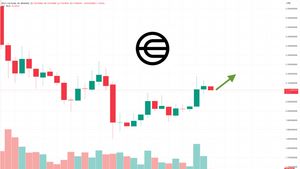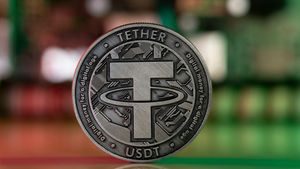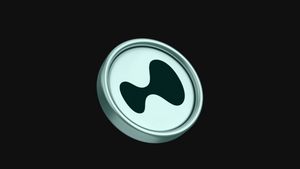JAKARTA - In a very rare discovery, scientists have found a 1,300-year-old tattoo with the symbol Christian on his leg preserved into a mummy in Sudan.
The owner of this tattoo was buried in the Ghazali monastery, which is located 15 km from the banks of the Nile in North Sudan, and is most likely one of the monks living within the community.
Archaeologists at Purdue University accidentally found a tattoo on the leg, which appears to describe a symbol referring to the name Jesus Christ.
This is the second example of a tattoo found in the Middle Ages of Sudan, which at that time was part of the kingdom of Nubia.
Dr. Robert Stark, who led a bioarkeological study of Ghazali's remains, said that this tattoo is a personal tattoo that may be intended as a marker of spiritual travel.
These tattoos include symbols called 'Christograms' that combine Greek letters 'chi' and 'rho' to create a monogram that stands for the name Christ.
The tattoo also includes the letters alpha and omega - the first and last letters in the Greek alphabet - which represent Christian beliefs that God is the beginning and the end of everything.
Dr. Stark said that these symbols had long been used as representations of Christian faith, with the letters alpha and omega introduced by Roman Emperor Konstantinus around 300 AD.
He added that the orientation of the tattoo shows that the tattoo is designed to be seen by individuals, showing a personal meaning rather than the public.
This discovery was made by a coincidence by Kari Guilbault, a Ph.D student in Purdue, who was photographing the remains. Although an expert in the mid-century tattoo practice, Guilbault was not examining the remains looking for tattoos, and he said the discovery was "a total coincidence."
When opening the leg wrapper, Guilbault saw a mark on the leg, whose experience previously indicated that it could be a tattoo.
Using full spectral photography and custom image editing software originally created to study cave paintings, Guilbault managed to uncover the tattoo in stunning detail.
For the second example of the Middle Century Nubia tattoo ever discovered, this discovery provides interesting insight into the practice of tattoos at that time.
Previous tattoos from the region used 'dots and lines' techniques according to Guilbault, and mainly consisted of geometric patterns or flowers.
However, the two tattoos from the Middle Ages are religious symbols and have a much more consistent straight line.
This tattoo also changes the theory that only women in Middle Century Nubia were tattooed, as this is the first tattoo ever found on male remains.
Another Middle Century Nubia tattoo is Santo Mikael's monogram found in a woman's thigh.
SEE ALSO:
"One of the big questions is how we can know someone is religious, and this is one of the real markers of their Christian faith," Guilbault said, quoted by VOI from MailOnline. "This is a very good example of how one's faith is part of their life and body."
It may come as a surprise that this little tattoo has lasted more than a thousand years and is still recognizable.
Since the body considers tattoo ink as a foreign substance under the skin, the ink will decompose over time by the body's natural defense.
However, after the body died, this decomposition was stopped, so that the tattoo was preserved as long as the body could still be identified.
Although Nubia did not practice mumification on purpose, Sudan's dry conditions made many remnants from Ghazali naturally become mummies.
Tattooed legs are part of the remains that are only partially preserved into mummies, ranging from knee to bottom.
Unfortunately, the fragile nature of these remnants makes it impossible to determine what the composition of the tattoo ink is, as taking samples will undermine its integrity.
However, it is thought that the oldest tattoos in human history may use carbon-based pigments such as charcoal in carriers such as water, animal fat, or even mother's milk.
The English, Chinese, Japanese, Arabic, and French versions are automatically generated by the AI. So there may still be inaccuracies in translating, please always see Indonesian as our main language. (system supported by DigitalSiber.id)


















